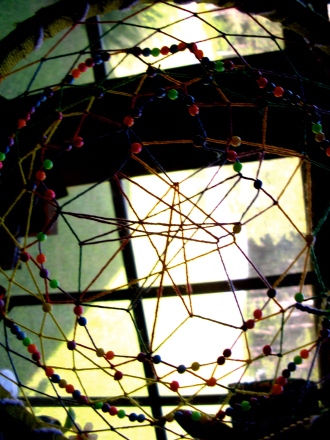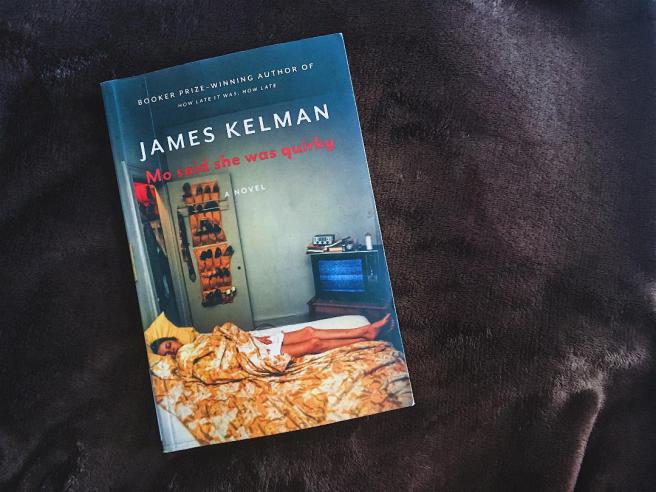Carrara marble is the famous white stone sourced for centuries from the Apuan Alps in northwest Italy, not far from Pisa and the Cinque Terre. Like diamonds, there are variations in the color — from pristine white to blue-gray tints and with lots or very few of the gray streaks. And, of course, variations in price; the whitest being the most expensive.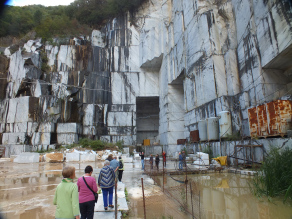
It is quarried near the town of Carrara, on the northern-most tip of Tu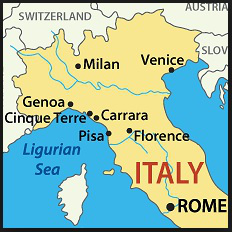 scany, near the coast of the Ligurian Sea.
scany, near the coast of the Ligurian Sea.
While more than 600 quarries dot the mountains, the largest and still-active quarry area has been mined since Roman times. That’s almost 2,100 years of mining marble! It has an amazing history as different emperors, rulers and republics owned it all. The workers have ranged from slaves to convicts to present-day quarry workers. It’s always been dangerous work, and it boggles the mind to think that 2,000 years ago they were able to cut and haul car-size cubes of marble down the mountain. Even with today’s heavy equipment and technology, it still has a rather primitive feel.
Watch this short video that shows “il capo” or “the chief,” (I’d call him maestro – he looks like a conductor) as he gives hand signals to the equipment operators who can’t see what their powerful excavator buckets are doing. You can guess why he’s missing parts of fingers…
There’s a little town in the heart of it all, Colonnata, that has a beautiful marble church and monument to the quarry workers. The famous white stone is everywhere. The town specializes in something else white: lardo – large slabs of cured pork fat, made from the thick layer on the back of a pig. They age it in large marble casks from six months to two years. It was initially produced for quarry workers who needed lots of calories in a portable package. Probably the original sandwich and lunch box!
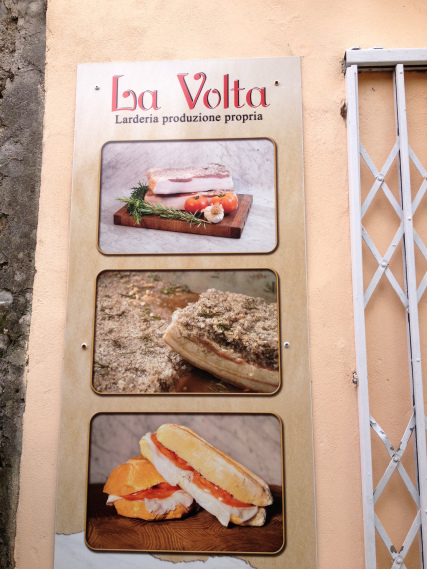
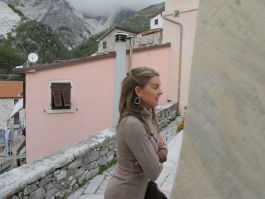
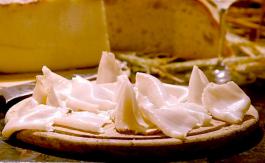
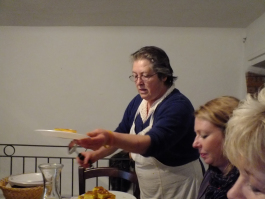
Lardo is traditionally made with sea salt, ground black pepper, fresh rosemary, and chopped garlic. During curing, the salt draws moisture from the fat and creates a brine that protects it from air and spoilage.
It is still produced today, typically served in thin slices as part of an antipasti platter. The texture is delicate and creamy with a slightly sweet and herbaceous flavor.
Want to try it? We’re going to Colonnata in May, 2018, to visit an active quarry and explore the charming village. We’ll have a traditional local lunch featuring lardo, other cured meats and wonderful local dishes, along with bottomless carafes of wine. Lunch Italian style!
Here are some of the monuments and statues you’ll recognize that were sourced in the Carrara quarries:
• The Pantheon, Rome (27 BC)
• Trajan’s Column, Rome (113 AD)
• Cathedral (Duomo) of Siena (1215)
• Michelangelo’s Pietẚ, Rome (1498)
• Michelangelo’s David, Florence (1501)
• Robba Fountain, Ljubljana, Slovenia (1751)
• Marble Arch, London (1827)
• Peace Monument, Washington DC (1878)
 ~Trajan’s Column, commemorating Roman emperor Trajan’s battle victory.
~Trajan’s Column, commemorating Roman emperor Trajan’s battle victory.
~Michelangelo’s Pietẚ, inside St. Peter’s Basilica in Rome.
.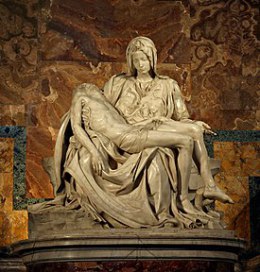
~Siena’s spectacular duomo and bell tower in central Tuscany.
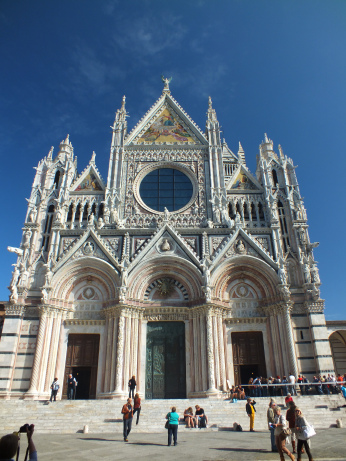

Interested in joining a future small-group or custom tour? Send me an email: lynette@cypresstours.net. I’d love to chat about how we can make it happen for you.
Advertisements Share this:

